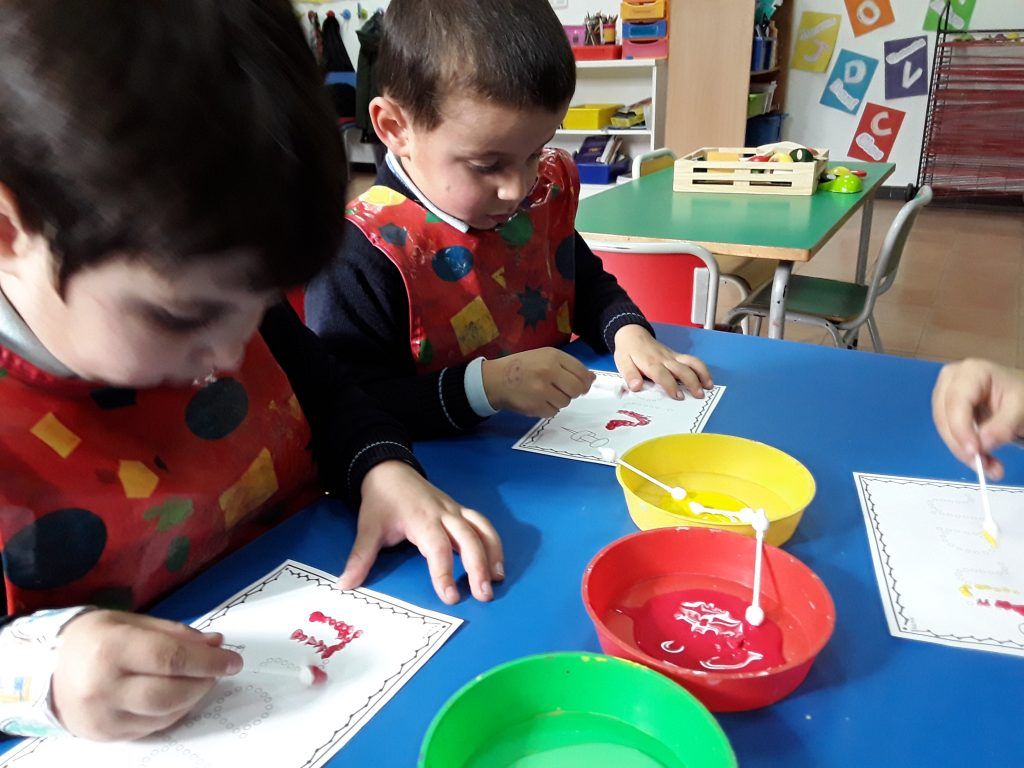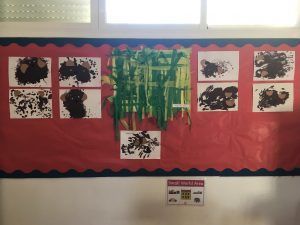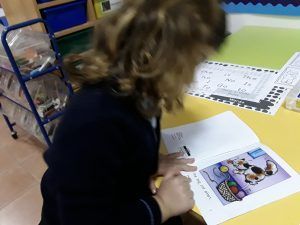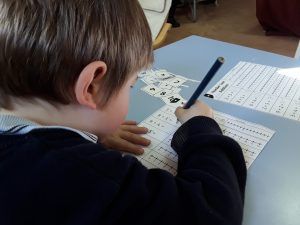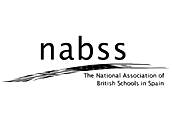Learning through stories and play – Aprender a través de los cuentos y el juego
EARLY YEARS
Nursery
In Nursery our topic has been ‘We’re Going on a Bear Hunt’ by Michael Rosen. The children have really enjoyed learning the story and have been involved in lots of bear themed activities. They are able to re-tell the story and act it out using actions to demonstrate the different settings in the story such as ‘long, wavy grass’ and ‘thick, oozy mud’.
This reduces the volume of blood that needs to pass through your blood vessels, which lowers your blood pressure. This vaccine is not recommended for anyone 6 years of age or older. The correlations between cortex and WM existed in both non-PVC and PVC data, and most correlations between cortical and OFF ROIs decreased as a result of PVC Lovegra piller pris. BYDUREON is for use in a single patient only.
While reading We are Going on a Bear hunt the Nursery children were asked to create some art work based on the themes described in the book. One of the scenarios they enjoyed most was “long wavy grass” We have learned that some grass can be sharp, long, short, and of course wavy. We went all round school studying how different grass could be. Once back in the classroom we made a grass collage. Children cut their own paper in strips and they used lots of glue to stick the strips in place. We put our collage next to our lovely bears.
Children had the opportunity to learn abo
ut famous visual artist Wassily Kandisky. Student were shown a variety of Kandinsky`s work including Circular Colours Studies. We have chosen this particular work as it is related to our maths studies while learning about shapes and colour mixing in art. While doing their very own version of the Circle study our children have learned how to mix colours from primary colours to obtain a variety of new ones. Once students completed their work they were put together to make a large piece of art. The results are quite stunning.
The nursery children then went on to learn the story ‘Goldilocks and the 3 Bears’. The role-play corner was made into the house of the 3 bears and the children were taught lots of mathematical language related to size. They completed lots of maths activities around size and comparison and learnt the song ‘When Goldilocks Went to the House of the Bears’.
En Nursery, nuestro primer tema ha sido el cuento «Vamos a cazar osos» de Michael Rosen. Los niños han disfrutado mucho aprendiendo la historia y han participado en muchas actividades relacionadas con los osos. Ahora pueden contar la historia ellos solos y representarla utilizando acciones para demostrar los diferentes escenarios de la historia, como «hierba larga y ondulada» y «barro espeso y viscoso».
Una de las actividades realizada por los niños ha sido crear obras de arte basadas en los temas descritos en el libro. Uno de los escenarios que más disfrutaron fue el «pasto largo y ondulado». Hemos aprendido que algunos pastos pueden ser afilados, largos, cortos y, por supuesto, ondulados. Fuimos por toda la escuela estudiando cuántos tipos diferentes de césped hay. Una vez de vuelta en el aula, hicimos un collage de hierba. Los niños cortaron su propio papel en tiras y usaron mucho pegamento para pegar las tiras en su lugar. Pusimos nuestro collage al lado de nuestros adorables osos.
Los niños tuvieron la oportunidad de aprender sobre el famoso artista visual Wassily Kandisky. A los estudiantes se les mostró una variedad de trabajos de Kandinsky, incluidos los estudios de colores circulares. Hemos elegido este trabajo en particular ya que está relacionado con nuestros estudios de matemáticas mientras aprendemos sobre formas y mezcla de colores en el arte. Han creado su propia versión del estudio Circle, nuestros niños han aprendido a mezclar colores primarios para obtener una variedad de colores nuevos. Una vez que los estudiantes completaron su trabajo, se juntaron para hacer una gran obra de arte. Los resultados son bastante impresionantes.
Por último, los niños de Nursery aprendieron la historia «Ricitos de oro y los 3 osos». En el rincón de juegos, se recreó la casa de los 3 osos, para que los niños pudieran jugar a los roles. Hemos trabajado el lenguaje matemático relacionado con el tamaño con muchas actividades matemáticas de tamaño y comparación y aprendimos la canción «Cuando Ricitos de Oro fue a la Casa de los Osos».
Reception
The F(ab’) 2 content is not less than 85%, F(ab) content is not more than 7%, and the product contains less than 5% intact immunoglobulin. These forms of insulin help to prevent large spikes in your blood sugar level and help manage your blood sugar level. An erection should occur within 5 to 20 minutes and last up to 60 minutes Lovegra sem receita. Do not drive or operate heavy machinery until you know how Betimol affects you.
In Reception we have been learning about minibeasts and pets. The children looked closely at real life minibeasts and we learned about the different types and their habitats. They sorted minibeasts into different categories such as wings and no wings and how many legs they had.
The children have been so involved in our ‘pet’ topic! They have really enjoyed learning about the different types of pets and what they need to be happy and healthy. Next we will be looking at the difference between animals that can be kept as pets and animals that live in the wild.
In phonics, we have been doing a lot of reading! The children are doing really well at sounding words out and blending the sounds together to read the word. They demonstrated this when we played ‘bingo’; the children all had pictures on their bingo board and they were shown a word which they had to read and see if they had the matching picture on their board. All children did amazingly well!
In maths, we have been learning how to add numbers together using a number line by starting on the first number in the number sentence and ‘jumping’ along the number line the amount of number we are adding. It was tricky at first, but the children persevered and are now excellent at this way of adding!
En Reception hemos estado aprendiendo sobre insectos y mascotas. Los niños observaron insectos reales y aprendimos sobre los diferentes tipos y sus hábitats. Los clasificaron en diferentes categorías, como alas y sin alas y cuántas patas tenían.
Por otro lado, los niños han estado muy involucrados con la temática de las «mascotas»! Han disfrutado mucho aprendiendo sobre los diferentes tipos de mascotas y lo que necesitan para ser felices y saludables. Analizamos también la diferencia entre los animales que se pueden mantener como mascotas y los animales que viven en la naturaleza.
En fonética, ¡hemos estado leyendo mucho! A los niños les está yendo muy bien pronunciando palabras y combinando los sonidos para leer cada palabra. Lo demostraron cuando jugamos al «bingo»; Todos los niños tenían imágenes en su tablero de bingo y se les mostró una palabra que tenían que leer y ver si tenían la imagen correspondiente en su tablero. ¡Todos los niños lo hicieron increíblemente bien!
En matemáticas, hemos estado aprendiendo cómo sumar números usando una línea numérica comenzando con el primer número en la línea numérica y «saltando» a lo largo de la misma la cantidad de números que estamos agregando. Al principio fue complicado, pero los niños perseveraron y ahora suman excelentemente de esta manera.
